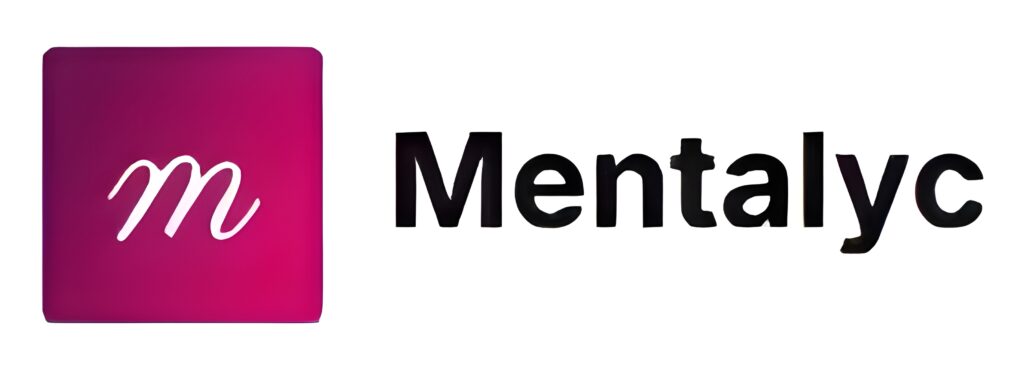Have your progress notes written for you automatically
Embedded Behavioral Health (EBH) is an integrated approach to delivering mental health care designed to meet the unique demands of specific populations, such as military personnel, first responders, and corporate employees. This model brings mental health services directly into the environments where individuals work and live, reducing barriers to access, normalizing mental health treatment, and supporting better outcomes.
EBH creates a seamless and accessible mental health support system designed for the unique cultural, operational, and emotional needs of the population served. This article explores EBH benefits, challenges, best practices, and case studies.
Key Features of EBH
EBH programs typically share four core elements:
- Proximity to Clients: Mental health professionals are physically located within the setting. For instance, in military EBH, therapists are embedded in a battalion or unit, ensuring easy and immediate access to care.
- Cultural Competence: Embedded clinicians are trained to understand the specific culture, language, and stressors of the population they serve. Cultural alignment builds trust and reduces stigma around seeking mental health treatment.
- Collaborative Care: Mental health providers work closely with other professionals, such as medical staff, supervisors, or organizational leaders. Collaboration ensures a comprehensive approach.
- Preventative Focus: In addition to addressing existing mental health issues, EBH emphasizes prevention through psychoeducation, resilience training, and early intervention programs.
Benefits of EBH
EBH gained traction due to its many advantages over traditional models of treatment, particularly for populations with high stress or within high-stakes environments.
1. Accessibility: By embedding mental health professionals into the workplace or community, individuals access care without the logistical barriers of traveling to a clinic or scheduling appointments far in advance. This immediacy is vital in settings where stress levels escalate quickly.
2. Reduced Stigma: When mental health services are a routine part of the environment, seeking support becomes normalized. In contexts like the military, EBH helps create a culture that values emotional and psychological well-being.
3. Improved Outcomes: Proximity allows for swift interventions, reducing the likelihood of issues escalating into crises. Regular check-ins, psychoeducation, and immediate support contribute to better overall mental health outcomes.
4. Enhanced Team Cohesion: In workplaces or units where EBH is implemented, mental health professionals can address interpersonal conflicts, improve communication, and offer team-based resilience training—building stronger, healthier team dynamics.
Common Settings for Embedded Behavioral Health
Military Units: The military pioneered EBH to support service members facing unique stressors, such as combat exposure, frequent relocations, and long separations from family (U.S. DOD, 2024). Embedded therapists provide individual therapy, crisis intervention, and resilience training within units.
Corporate Environments: EBH addresses workplace stress, burnout, and work-life balance issues. Many corporations embed mental health professionals in their Employee Assistance Programs (EAPs) to offer counseling, workshops, and wellness initiatives (EAPA, 2024).
Schools: School-based EBH programs integrate counselors, therapists, and social workers to support students, educators, and families (CSMH, 2024). Programs address academic stress, bullying, and emotional challenges, creating a healthier learning environment.
First Responder Organizations: Police, fire departments, and EMS/EMT services often embed mental health professionals to help personnel manage the emotional toll of high-stress, traumatic situations (Patel, 2018).
Challenges of Embedded Behavioral Health
While EBH offers many benefits, it also comes with unique challenges.
1. Maintaining Confidentiality: Ensuring client confidentiality can be more complex in a close-knit setting. Therapists must establish clear boundaries and policies to protect privacy while maintaining trust.
2. Balancing Dual Roles: Embedded clinicians often juggle therapeutic roles with organizational objectives, such as training staff or supporting leadership goals. Dual roles can create conflicts, requiring clear communication and professional boundaries.
3. Burnout: Being embedded in high-stress environments, such as military units or emergency services, can lead to secondary trauma and burnout for therapists. Regular self-care, supervision, and peer support are essential.
4. Resistance to Change: In organizations where mental health stigma persists, therapists may face resistance when introducing EBH programs. Building rapport and demonstrating the value of mental health services is critical.
Best Practices
These tips can help therapists considering or currently practicing in an embedded setting:
1. Prioritize Cultural Competence: Invest time in understanding the organization’s culture, values, and language. Attend training, shadow members of the organization, and engage in informal conversations to build trust and rapport.
2. Establish Clear Boundaries: Define your role, responsibilities, and confidentiality policies from the outset. Transparency about how information is shared and used within the organization increases trust.
3. Use a Systems Approach: EBH requires viewing individuals as part of a larger system. Collaborate with leadership, medical teams, and others to address systemic issues that affect mental health.
4. Implement Preventative Programs: Offer workshops, training, and psychoeducational resources that proactively address stress management, resilience, and mental health literacy. Prevention can reduce the need for more intensive interventions.
5. Monitor Well-being: Debrief with peers or supervisors regularly and engage in self-care practices. Working in embedded settings can be emotionally taxing, and clinicians must prioritize their mental health.
Practical Tips for Implementing EBH Programs
For therapists tasked with starting an EBH program, consider the following steps:
Step 1: Assess Needs. Conduct a needs assessment to understand the organization’s specific mental health challenges. Surveys, focus groups, and interviews can provide valuable insights.
Step 2: Build Relationships. Establish trust with leadership and key stakeholders. Highlight the value of mental health support and its impact on productivity, morale, and overall well-being.
Step 3: Create a Framework. Develop a program framework that includes services offered, referral pathways, and measurable goals. Tailor the framework to the organization’s unique culture and needs.
Step 4: Pilot and Evaluate. Start with a pilot program to test feasibility and effectiveness. Use feedback to refine the program and demonstrate its impact through data and success stories.
Examples of EBH in Action
Case Study 1: Military EBH
A U.S. Army battalion implemented an EBH program to address the high rates of mental health-related attrition among soldiers. Before the program’s implementation, soldiers faced many barriers to mental health treatment, including stigma, scheduling difficulties, and the challenge of accessing off-base services during training schedules. The EBH model embedded licensed mental health clinicians directly within the battalion.
The program featured several components:
1. Immediate Access to Care: Soldiers could walk into the EBH clinic without prior appointments. The clinic was strategically located within the battalion’s headquarters to normalize access and remove physical barriers to seeking help.
2. Stress Management Workshops: Group sessions focused on resilience training, mindfulness practices, and coping mechanisms designed for the unique stressors of military life, such as deployment and separation from family. These workshops were integrated into routine training schedules.
3. Leadership Collaboration: Commanders were trained to recognize signs of stress and mental health issues among soldiers and encouraged to proactively refer soldiers to the EBH team while maintaining confidentiality and respect for their needs.
4. Crisis Intervention Services: On-call clinicians provided immediate crisis support, addressing acute issues like suicidal ideation or post-traumatic stress episodes.
Within the first year of implementation, the battalion reported a 30% decrease in mental health-related absences. Soldiers expressed greater willingness to seek help, citing the program’s proximity and the supportive culture supported by leadership. Additionally, morale and unit cohesion improved as soldiers received timely support for their mental health needs.
Case Study 2: Corporate Wellness Program
A prominent technology company with a high-stress work culture piloted an EBH program as part of its Employee Assistance Program (EAP). The company faced increasing rates of burnout, absenteeism, and employee turnover, with employees citing a lack of mental health support as a primary concern. The company partnered with a behavioral health provider to integrate onsite mental health services.
Key aspects of the program included:
1. Onsite Counselors: Licensed therapists were available in private offices within the company’s headquarters. Employees could schedule same-day appointments or drop in for immediate concerns. These services were confidential and separate from HR processes.
2. Stress Reduction Workshops: Regular workshops addressed topics like managing work-life balance, setting boundaries, and recognizing burnout. Workshops were designed to be interactive and included mindfulness exercises and practical strategies for managing daily stressors.
3. Individual Therapy and Coaching: Employees struggling with anxiety, depression, or workplace-related stressors received individualized short-term therapy or coaching. Referrals for specialized care were also provided as needed.
4. Crisis Support: The EBH team provided immediate intervention for workplace crises, such as team conflicts, grief, or acute stress during significant product launches.
The program led to a 15% reduction in absenteeism and a measurable improvement in employee satisfaction scores, as captured by quarterly surveys. Employees reported feeling more supported and valued, and exit interviews indicated a decline in turnover attributed to workplace stress. The company’s leadership noted improved team communication and morale, which were driven by the EBH initiative.
Case Study 3: School-Based EBH
A high school in a suburban district faced rising rates of bullying, academic stress, and absenteeism. Students reported feeling overwhelmed by academic pressures, while teachers struggled to manage their classrooms’ emotional and behavioral needs. The school implemented an EBH program focusing on proactive support and early intervention.
Program Implementation:
1. Social Worker Integration: Two full-time licensed social workers were embedded into the school. They maintained an open-door policy, allowing students to drop in for support or schedule regular counseling sessions. The social workers collaborated with teachers, administrators, and parents to address behavioral and emotional challenges.
2. Peer Support Groups: Recognizing the power of peer connections, the EBH team facilitated student support groups. Groups focused on topics like managing anxiety, building self-esteem, and addressing social issues. Participation was voluntary and included a mix of structured activities and open discussions.
3. Teacher Training: Teachers received training on recognizing signs of stress and mental health issues in students. They were taught de-escalation techniques, how to approach students compassionately, and when to involve the social workers for additional support.
4. Family Engagement Workshops: The program included evening workshops for parents on topics like supporting teens with anxiety, strengthening resilience, and managing academic expectations. The workshops bridged the gap between school and home environments.
Over two academic years, the program yielded significant improvements:
- The graduation rate increased by 12%, attributed partly to improved engagement facilitated by the EBH team.
- Reported cases of bullying dropped by 25% as the peer support groups and teacher interventions created a safer school environment.
- Annual surveys showed a marked improvement in students’ self-reported emotional well-being. Teachers also reported better classroom dynamics and fewer behavioral disruptions.
- Parents expressed gratitude for the workshops, noting improved communication and stronger relationships with their children.
Key Takeaways from These Examples
The case studies demonstrate the versatility and effectiveness of EBH programs across various settings. Common threads include:
1. Accessibility: Immediate, onsite access breaks down barriers to mental health support.
2. Customization: Programs designed for the cultural and operational needs of the population served.
3. Proactive Interventions: Preventative measures, such as workshops and training, complement direct mental health treatment.
4. Collaboration: Successful EBH programs require collaboration between mental health professionals, organizational leadership, and the communities they serve.
By understanding and replicating these principles, therapists can effectively implement EBH programs in diverse environments for improved outcomes.
Conclusion
Embedded Behavioral Health (EBH) is a transformative approach to mental health treatment. It offers accessibility, prevention, and cultural alignment in unique environments. For therapists, EBH represents an opportunity to make meaningful connections and address mental health challenges. By understanding the nuances of EBH and applying best practices, clinicians can create programs that strengthen resilience, improve outcomes, and normalize mental health support in diverse settings. Whether in the military, schools, corporations, or first responder organizations, embedded therapists have the potential to profoundly impact the lives of the people they serve.
References:
- Center for School Mental Health (CSMH). Improving Mental Health Access for Students: Embedded Behavioral Health Programs. Retrieved from https://csmh.umaryland.edu
- Employee Assistance Professionals Association (EAPA). The Role of EAPs in Supporting Workplace Mental Health. Retrieved from https://www.eapassn.org
- National Association of Social Workers (NASW). Social Workers in Schools and Community Settings: Roles and Best Practices. Retrieved from https://www.socialworkers.org
- Patel, V., et al. (2018). The Case for Integrated Mental Health Services in Public Health. World Psychiatry, 17(2), 276-289.
- U.S. Department of Defense (U.S. DOD). Military Embedded Behavioral Health Overview. Retrieved from https://health.mil








